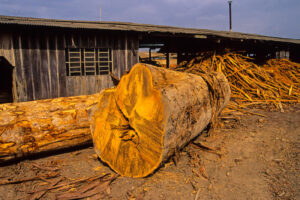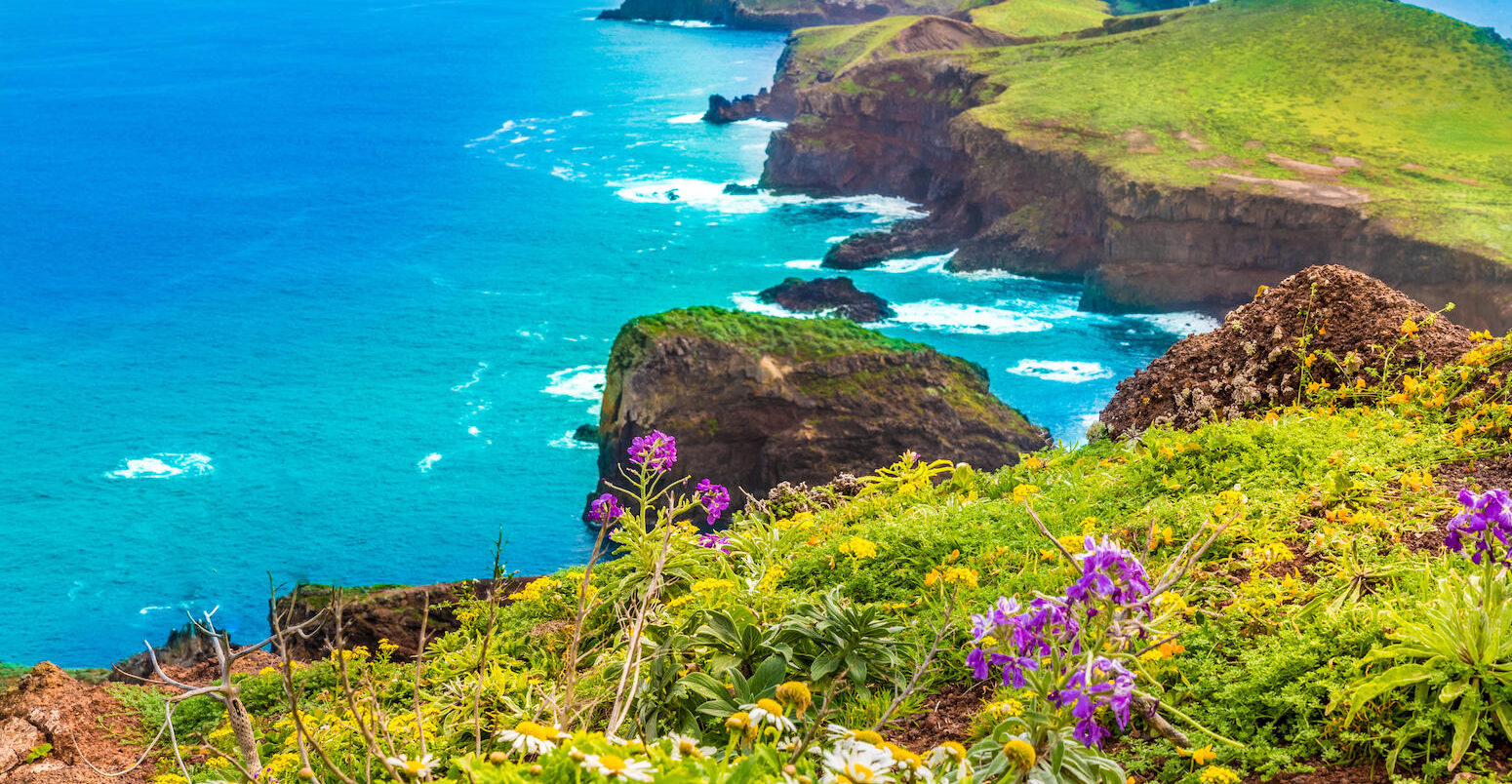
Prioritising threatened species could help ‘guide’ expansion of EU protected areas
Yanine Quiroz
07.28.23Yanine Quiroz
28.07.2023 | 11:06amThe expansion of protected areas in the EU should be guided by choosing locations that are home to the species facing “the most imminent threat of extinction”, a new study suggests.
This would run counter to the current regime which prioritises the hitting of targets simply through the amount of area that is protected.
The EU is committed to expanding protected areas by 30% by 2030 to “halt and reverse” biodiversity loss, as agreed in theKunming-Montreal Global Biodiversity Frameworkand theEU Biodiversity Strategy.
However, the target is a collective one – and EU countries have not agreed on the level of responsibility that each country will have towards fulfilling the goal.
New research, published inBiological Conservation, examines the extent to which current protected areas overlap with critical habitat for threatened species in the EU.
It finds that protected areas currently cover 50% of the range of threatened species.Spain,Greece and Portugal contain the greatest number of species with “imminent” threat of extinction.
The authors call for EU countries to prioritise expanding protected areas within countries that contain the most-threatened species, rather than be guided solely by area targets.
They also call on policymakers to focus conservation efforts on islands and freshwater species.
The authors suggest that while some countries have already met, or are close to meeting, the 30% target, their proposal means that those that are richer in biodiversity, or are home to more threatened species, need to implement “further conservation efforts”.
Threatened species
In order to identify threatened species and their ranges in the EU, the researchers used theInternational Union for Conservation of Nature(IUCN) “red list”. This list aims to classify species at high risk of global extinction.
Species in the red list are divided into nine categories, ranging from species that have not been evaluated yet, or which are lacking sufficient data, through to those that are critically endangered or extinct.
The new study focuses on the “vulnerable”, “endangered” and “critically endangered” categories – a grouping the IUCN refers to as “threatened with extinction”.
Of the 42,100 species listed as threatened with extinction globally, there are 2,463 species that are found in the EU and also have maps of their range available.
The authors limited their analysis to species that fulfil three criteria: those that are “extant”, “resident” and “native” to the EU.
Extant means that the species still exists. Resident means the species is permanently living in the EU. Native means that the species was not introduced by humans. This leaves a total of 2,290 species.
Few previous studies have included invertebrates and plants when evaluating the coverage of protected areas for threatened species, the paper explains.
Of the 2,290 analysed species in the study, 1,785 were terrestrial, 505 freshwater and 947 endemic to the EU – meaning they are not found anywhere else in the world.
According to the paper, vertebrates and land snails are the only “comprehensively assessed” taxonomic classes in Europe. This means that at least 90% of the species in these groups has been assessed in the IUCN red list.
Within these closely studied classes, 42% of freshwater fish species and 30% of snails in the EU are classified as “threatened with extinction”.
Gap analysis
In addition to collecting maps of the ranges of threatened species, the researchers analysed 127,046 terrestrial protected areas across the EU.
The majority of these – nearly 80% – are nationally designated protected areas. These areas are typically under “strict protection” regimes, meaning they are “left essentially undisturbed from human pressures”, according to theEuropean Commission.
The remaining protected areas analysed areNatura 2000sites, a network of protected areas that are nominated by member states, but designated by the European Commission.
These sites aim to protect species listed in the annexes of both the EU’sBirds DirectiveandHabitats Directive, and have a wider approach to conservation and the sustainable use of such areas, compared to nationally designated protected areas.
According to thecommission, Natura 2000 is “the largest coordinated network of protected areas in the world”.
These sites protect 196 species and subspecies of birds, 1,389 animal and plant species, and 233 habitat types.
However,previous studieshave criticised Natura 2000 sites for representing only a small fraction of the total number of threatened species in the EU, the authors say.
The authors overlaid Natura 2000 sites and nationally protected areas with the ranges of threatened species to estimate the percentage of each threatened species’ range that is covered by EU protected areas. (Some places are covered by both a national protected area and a Natura 2000 site designation.)
地图是low shows the percentage of threatened species’ ranges contained within protected areas in each country in the EU. The darker the green, the greater the coverage of threatened species’ habitats.
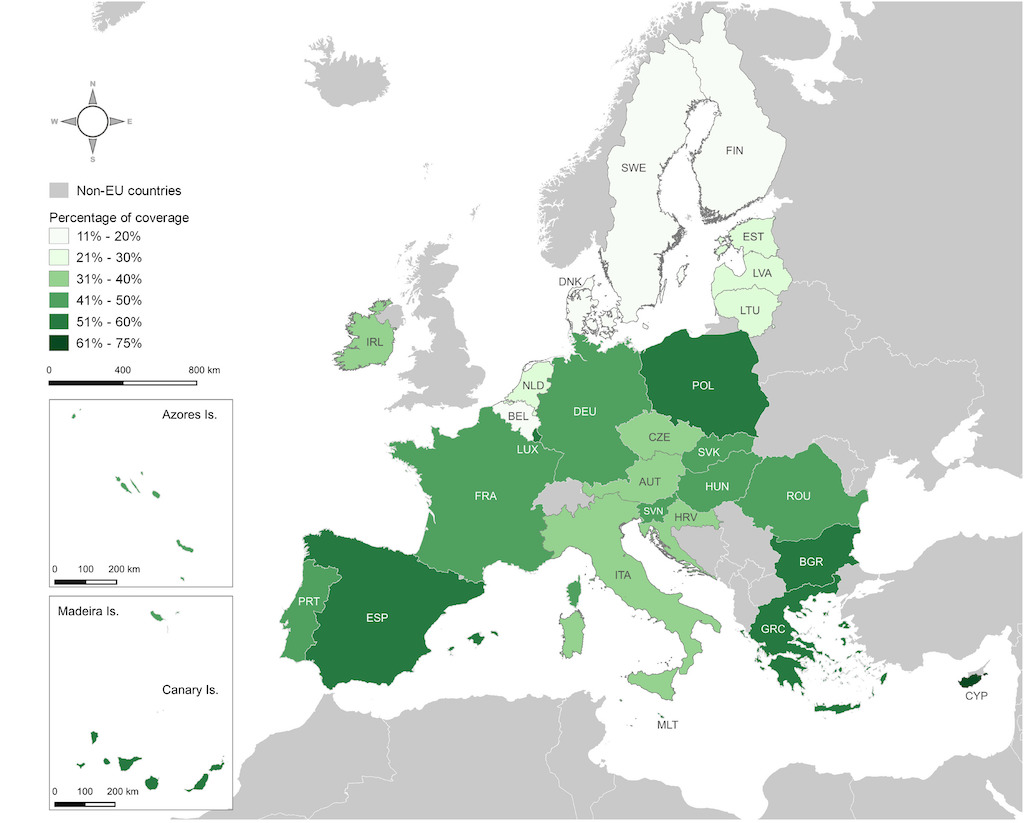
Taking the EU bloc as a whole, the study finds that protected areas cover about 50% of the range of threatened species.
That is “a higher percentage of coverage” than previous EU-wide studies have found, the study notes. But, it warns, its results are not directly comparable to those from other studies, as there has been a recent increase in both the number of protected areas and the number of species included in the IUCN red list.
作者发现自然2000个站点覆盖41.5% of the ranges of threatened species in the EU, while nationally protected areas cover 34%. Due to the overlap between the two types of protected areas, the average total coverage across the region is 50%.
Dr Konstantina Spiliopoulou, a biologist at theHellenic Centre for Marine Researchin Greece and the lead author of the study, tells Carbon Brief:
“What we wanted to do is compare those two [kinds of protected areas] and answer the question of which one offers better coverage to certain species. But we found that they are complementing each other.”
The countries with the highest average proportions of threatened species range covered by protected areas are Cyprus (75%), Luxembourg (57%) and Poland (54%).
Conversely, Finland and Sweden have the lowest percentage of protection for threatened species – with around 12% and 14% of their ranges covered, respectively.
Least protected
The research also identifies 71 threatened species with less than 0.1% of their ranges covered by protected areas.
The majority of these species aregastropods, such asLindbergia gittenbergeri– a critically endangered mollusc species, thought only to live in a single cave on the Greek island of Corfu.
The list also includes two mammals – theBarbary macaqueand theBavarian pine vole – as well asplants, crustaceans, insects, arachnids and lichens, such as theRamalina portosantana, a species that lives on or near the summit of the Portuguese island of Pico do Facho.
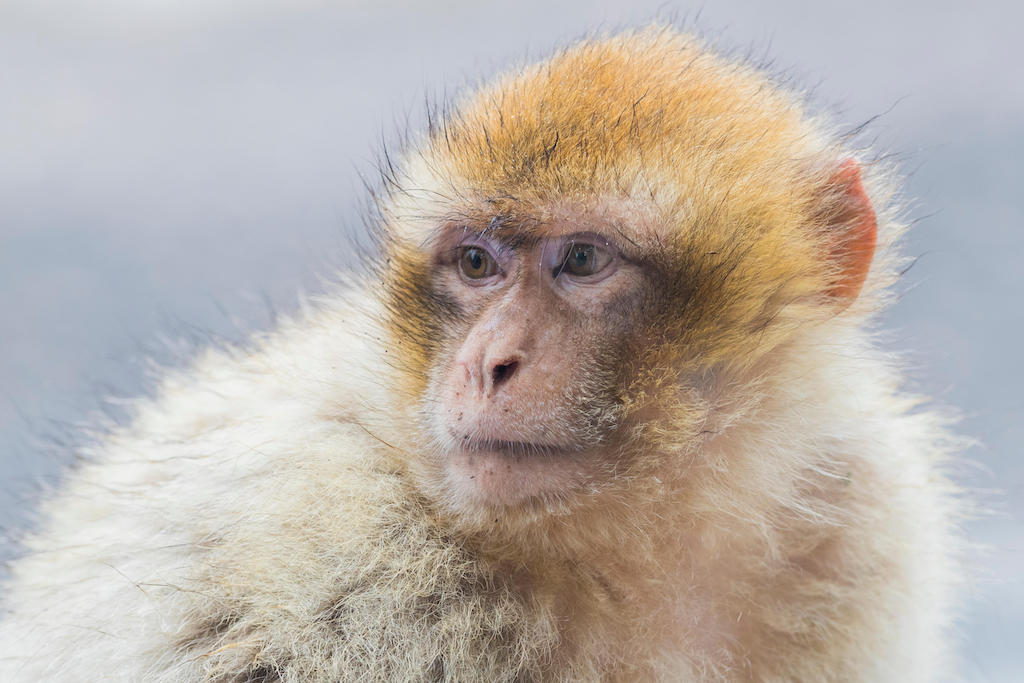
Of these 71 species, 44 are found only in Europe, such asVitrea striata– a critically endangered mollusc species endemic to Spain’s Balearic Islands.
研究发现,西班牙、希腊和葡萄牙的基于“增大化现实”技术e the countries with the highest number of threatened species, at 696, 493 and 416, respectively. Protected areas in these countries cover nearly 50% of the range of these threatened species, which the paper points out is higher than in most other EU countries. However, these countries also have the highest number of threatened species with less than 0.1% of their ranges contained in protected areas.
地图是low highlights that the most poorly protected threatened species are found on islands in southern Europe. This includes the islands of Madeira and the Azores in Portugal; Sicily, Sardinia and the Pontine Islands in Italy; the Aegean Islands, Crete and the Ionian Islands in Greece; the Canary and Balearic Islands in Spain; Corsica in France; and Brac Island in Croatia.
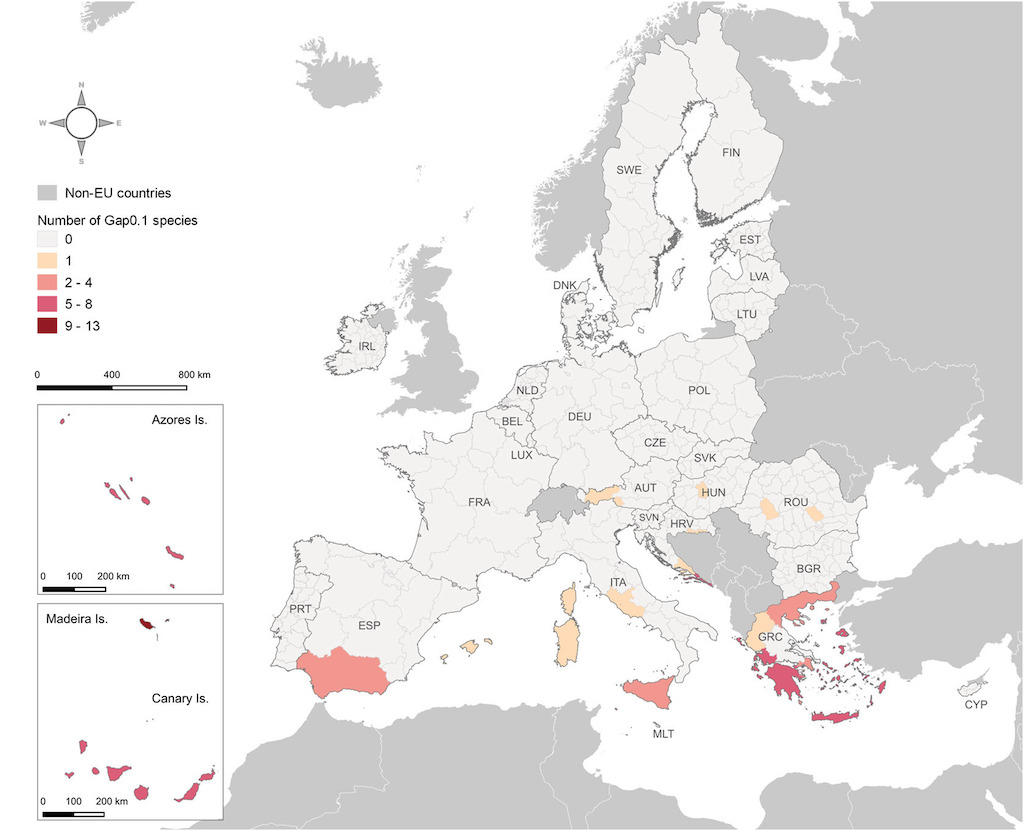
Dr Christos Mammidesis a senior researcher atFrederick University’sNature Conservation Unitin Cyprus and was not involved in the study. He notes that, although the study of the coverage of threatened species by protected areas – called gap analysis – is not novel, this research brings new findings. He tells Carbon Brief:
“What was really interesting about this study – and I think it’s one of the main strengths…is that they included as many species groups as possible. You will see similar studies in the European literature, [but] maybe focusing on birds or mammals alone.”
Dr Laetitia Navarro, a postdoctoral researcher at theDoñana Biological Stationin Spain, agrees. She notes that birds, mammals and amphibians have been well documented by the IUCN and that including other classes is “a nice contribution” of the study.
Aligning protected areas with biodiversity needs
Based on these findings, the study makes several suggestions to EU policymakers for achieving conservation targets.
One is prioritising the expansion of protected areas in southern EU countries, particularly on islands, where species are “imminently” threatened.
Spiliopoulou explains that islands tend to be biodiversity hotspots. New species have often emerged on islands due to the genetic diversity that such isolated areas allow. The isolationdiminishescompetition between species, producing changes in size and morphology, for example, small animals evolve into outsize versions in the absence of predators.
The lead author adds:
“This isolation has caused the species to be really sensitive to changes. [Once humans settled], species started to disappear really fast. That is why we see a lot of threatened species in the southern countries and specifically on the islands.”
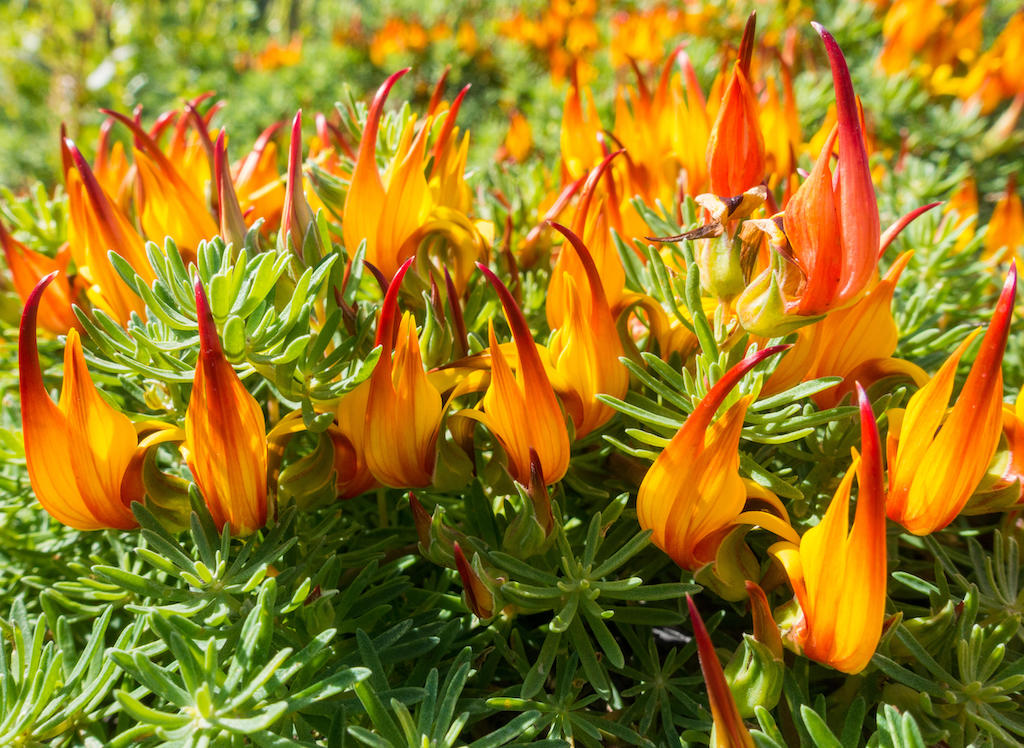
这项研究甚至认为,规律的国家eady, or almost, reached the target of 30% of land covered by protected areas – such as Spain, Greece, Croatia and France – still need additional conservation measures. The authors call for the expansion of protected areas to be “guided by biodiversity needs, rather than by percentages of area coverage”.
Spiliopoulou says:
“Those countries have so many endemic threatened species that it is really important that they expand protected areas.”
For Mammides, the fact that the research points out that certain countries richer in biodiversity may have to exceed 30% of protected area coverage is “an important point”.
The study adds that governments should protect freshwater species, as their ranges are less well-covered by protected areas than terrestrial species.
Spiliopoulou stresses that, although protected areas are legally designated to protect species or ecosystems, they are not enough on their own. Rather, she says, the success of conservation depends on how countries implement protected areas with their respective plans to protect biodiversity and ecosystems.
The study also acknowledges that protected areas require resources and must “be effectively managed” to contribute to conservation.
To ensure the effectiveness of protected areas, Navarro argues that the kind of management they have is “important”.
She explains that a protected area could have strict protection – with no human activity – or allow some kinds of sustainable use of ecosystems.
The latter has been the most scientifically endorsed kind of management, as it allows people to “enjoy what is in the protected areas, [without] destroy[ing] them”, Spiliopoulou says.
Navarro notes that ecosystem connectivity –definedas “the facility of species movements and other ecological flows among protected areas” – is crucial. She explains that connectivity is important for the health of ecosystems because species need, for example, more space to move when extreme events, such as forest fires, hit a region.
She tells Carbon Brief:
“Conservation of one species might not lead to as good an outcome as if you’re thinking of protecting a system and the interactions between species. It’s not just about threatened species. It’s also about ecosystems, about places that people have a specific relationship with.”
Spiliopoulou, K. et al. (2023) Protected areas and the ranges of threatened species: Towards the EU Biodiversity Strategy 2030, Biological Conservation,doi: 10.1016 / j.biocon.2023.110166
-
Prioritising threatened species could help ‘guide’ expansion of EU protected areas



